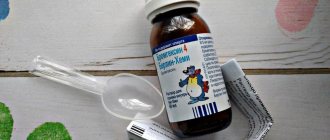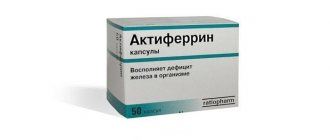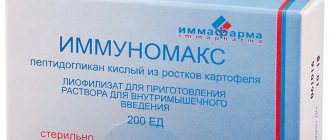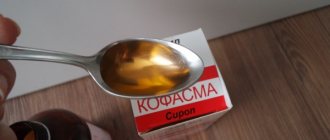Effect of the drug
Paracetamol has been considered a popular and sought after pain reliever and antipyretic for half a century. Efficiency is associated with uniform distribution across tissues.
The active ingredients block the action of prostaglandins, which are sources of pain. This eliminates moderate pain. The drug also copes well with fever. This serious symptom can indicate a variety of infectious and inflammatory diseases.
Before taking it, you should consult your doctor and read the instructions to prevent side effects. You should strictly follow the dosage, otherwise complications related to the functioning of the heart and kidneys may occur. The risk increases when taken concomitantly with alcoholic beverages.
Signs of poisoning do not appear immediately. Initially, your general well-being may only slightly deteriorate.
Pharmacological properties
According to the instructions for children's "Paracetamol" in a 120 mg suspension, the pharmacodynamics of the drug are as follows: it is a non-narcotic analgesic with a strong antipyretic and analgesic effect. The medicine blocks cyclooxygenase one and two, which affects the central nervous system. In addition, the drug affects areas of thermoregulation and pain. Cell percoxidases completely neutralize the effect of the drug on cyclooxygenase, as a result of which a strong anti-inflammatory effect does not appear. Also, the mucous membrane of the stomach and intestines does not suffer from the effects of paracetamol, and the exchange of water and salts in the body is not disrupted due to the effects of the drug.
To find out how long it takes for children's "Paracetamol" in suspension to act according to the instructions, it is necessary to study the pharmacokinetics of the drug. It is as follows:
- A high degree of absorption, at which the maximum concentration is reached within half an hour to two hours and ranges from five to twenty mcg/ml.
- The drug binds to plasma proteins by fifteen percent;
- Paracetamol penetrates the blood-brain barrier.
- When the drug is taken by a nursing mother, less than two percent of the dose taken passes into breast milk.
- The therapeutic effect of the concentration of the drug in the blood plasma is achieved only when using paracetamol at a dosage of ten to fifteen mg/kg.
- The metabolism of the drug in the liver occurs as follows: eighty percent interacts with conjugation and glucuronic acid, as well as sulfates, resulting in the formation of inactive metabolites; seventeen percent are hydroxylated, forming eight active-type metabolites, which enter into a conjugative reaction with glutathione, cysteine and mercapturic acid, ultimately forming inactive-type metabolites.
- The main cytochrome P450 isoenzymes in this type of metabolism are the CYP2E1 isoenzyme, which plays a leading role, and the CYP3A4 and CYP1A2 isoenzymes, which play a secondary role. If there is not enough glutathione, metabolites are able to block hepatocyte enzyme systems and also cause necrosis of these enzymes.
- According to the instructions for children's "Paracetamol" in suspension, the synthesis of metabolites of the substance paracetamol (for example, sulfates, glucuronides, as well as conjugates containing glutathione) has low pharmacological and toxic activity.
- The half-life of the substances included in the drug occurs within two to three hours. During the day, from eighty-five to ninety-five percent of the main active substance is excreted from the body through the kidneys in the form of sulfates and glucuronides, and three percent is excreted in its pure form.
In what cases is it effective?
The drug has an effect in various febrile conditions associated with elevated temperature. Particularly effective for colds.
Paracetamol is able to cope with pain of varying intensity. It is often used for headaches and toothaches. Helps women with pain during menstruation.
The drug is allowed to be taken by pregnant women and babies from 3 months. For children there are baby candles and syrup. The product is often given to babies who are starting to cut their teeth.
Indications
From the instructions for use of the syrup it is known that the drug is recommended to be taken in the presence of the following conditions and diseases:
- Acute respiratory viral infection (a disease of the respiratory tract caused by a viral infection entering the body).
- Influenza (a viral disease that can damage the respiratory tract, is also accompanied by severe intoxication and can lead to serious complications and death, mainly in elderly patients and children).
- Parainfluenza (an infection that damages the mucous cavities of the upper respiratory tract).
- Post-vaccination reactions (a condition that sometimes develops after vaccination, has a short-term course and usually does not cause harm to health).
- Mild to moderate pain.
Paracetamol for fever
Paracetamol can be used at a temperature if it has reached 38.5 degrees or higher. This is explained by the fact that elevated temperature has a negative effect on harmful microorganisms, and, therefore, allows you to recover faster.
It should be taken strictly according to the instructions, without exceeding the dosage. The tablet should be taken with a sufficient amount of drinking water, which will speed up the absorption of the active ingredient and minimize the negative impact on the liver.
Single dose 400-500 mg. If the temperature reaches 40 degrees, the dose can be doubled.
For children and adults, a single dose is determined based on weight. A child can take the drug 4 times per day. Duration of treatment – up to 3 days.
Compound
Paracetamol is produced in several dosage forms:
- pills;
- syrup;
- candles.
Further in the article we will talk about Paracetamol syrup for children. From the instructions it is known that it has a viscous consistency, a gray or yellow tint and a strawberry aroma.
The active ingredient is paracetamol, most often its concentration in 5 milliliters of syrup is 120 milligrams. In addition, the drug contains additional substances, which include:
- Citric acid.
- Propylene glycol.
- Sodium salt of benzoic acid.
- Sodium citrate.
- Sorbitol.
- Flavoring.
- Sugar.
That's what it says in the instructions. Children's syrup "Paracetamol" 125 mg dosage was released previously.
How to take for headaches
The medicine is quite effective for headaches. But when taking it, it is worth considering some features. The tablets should not be taken on an empty stomach. Before taking the pill, you need to have at least something to eat. If there is no appetite, then you can drink a glass of water.
You need to take the tablet with plain water. It is not recommended to use coffee and tea, as the effect may be reduced to zero. If unbearable pain is felt, then you can take 1000 mg of the drug at a time. You can take the medicine again after at least 4 hours. You can take no more than 4 tablets per day. This regimen does not apply to pregnant women (the dosage should be 2 times less).
Paracetamol is prescribed for migraines, which are characterized by persistent, throbbing pain, usually in one part of the head.
If the headache is associated with stress or a nervous condition, then 1 tablet is enough.
special instructions
The simultaneous use of paracetamol with other paracetamol-containing drugs should be avoided, as this may cause an overdose of paracetamol. When using the drug for more than 5 days, peripheral blood counts and the functional state of the liver should be monitored. The drug contains sucrose and sorbitol, which should be taken into account when treating patients with diabetes mellitus (5 ml of suspension contains 0.25 bread units). Paracetamol distorts the results of laboratory tests of glucose and uric acid in the blood plasma. If fever continues for more than 3 days and pain for more than 5 days, you should consult your doctor.
Paracetamol for colds
When a cold appears, you need to provide timely help. Otherwise, the condition may worsen. The first signs of the disease are excessive weakness and fatigue. During ARVI, a runny nose, cough, fever, muscle and joint pain appear.
Paracetamol will reduce the symptoms of the disease and improve the patient's condition.
Very often the drug is prescribed to adults and children over 12 years of age in tablet form. If the medicine is to be taken by children, then it is worth considering an important factor - the child must weigh more than 49 kg.
Babies up to one year old can be given the drug in the form of a suspension, after a year - in the form of syrup.
In many cases, adults take 1 tablet 4 times a day. Duration of treatment – no more than 3 days.
Contraindications
- erosions and ulcers of the gastrointestinal tract;
- stomach bleeding;
- inflammatory gastrointestinal diseases;
- chronic alcoholism;
- a combination of nasal and sinus polyposis, as well as bronchial asthma with intolerance to aspirin and other NSAIDs;
- severe renal failure;
- progressive kidney pathologies;
- severe liver failure;
- active liver disease;
- rehabilitation period after coronary artery bypass surgery;
- hyperkalemia;
- hypersensitivity to paracetamol and its components;
- children up to 1 month;
- 3rd trimester of pregnancy.
How to take for toothache
Often toothache catches a person at the most inopportune moment. Not in all cases it is possible to go to the dentist right away. To eliminate unbearable pain and improve the condition, you can take Paracetamol.
The drug is able to stop the production of prostaglandins, which are the source of pain. The tooth stops hurting, but the inflammatory process continues to spread. If the toothache does not go away, then you should not hesitate to go to the dentist.
You need to take the medicine after meals. Relief is observed after about 15-20 minutes. You can take the pill again no earlier than after 4 hours. You can take 4 tablets per day. Paracetamol can be taken for no more than 3 days.
Overdose
If the established recommendations are followed, the syrup is well tolerated and does not cause negative effects on the body. Local reactions (rash, urticaria, itching), angioedema are possible depending on the characteristics of each organism. Blood test data may change - the level of platelets and leukocytes decreases, the amount of oxidized hemoglobin increases.
Often, while taking non-steroidal drugs, bronchospasm occurs; this must be taken into account if the baby often suffers from obstructive bronchitis. Pancreatitis, liver dysfunction, and increased enzyme function may develop.
If your child has diabetes, there may be signs of hypoglycemia—low blood glucose levels. A patient taking large doses of paracetamol or using the medicine for a long period provokes the development of nephrotoxic shock, which is accompanied by renal colic, necrosis or the manifestation of pus in the urine.
When prescribing the drug in increased or high doses, the doctor must monitor the patient's condition.
Features of use by pregnant women
Pregnant women often complain of toothache. Most often, the cause is caries, which appears due to the fact that calcium in a woman’s body is directed to a greater extent towards the structure of the bone tissue of the unborn baby. This causes various problems, particularly with teeth.
Paracetamol is allowed to be taken by pregnant women, but precautions should be taken. The active substance can penetrate the placenta. The minimum dose of the medicine can be taken in the 2nd trimester, when the child’s organs are already formed.
Before taking it, you should consult your doctor. You can drink no more than 1 tablet per day. Repeated use may cause harm to the fetus.
Rules for writing recipes in Latin
According to tradition, the European recipe in Latin consists of three parts:
- Prescription begins with the abbreviation Rp and means “prescription.” From Latin it means “take.” Next, write the name of the medicine and the number of units of the active substance, written exclusively in the Latin accusative case, with the exception of the names of the ingredients, where the genitive case is used. Commercial names of drugs are usually written in quotation marks.
- On the second line, it is written in abbreviation Da tales doses, which translates as “give out these doses in quantity.” After the sign No., the quantity to be issued is indicated.
- On the third line is written S (Signa), which is translated from Latin as “designate.” The signature is an important part of the recipe. It is directed to the patient and explains how to use the medicine. Unlike previous parts, the signature is written in the national language.
Interesting! Latin abbreviations and poor handwriting of doctors can be a source of medical errors. According to a report by the Institute of Medicine of the National Academy of Sciences of the United States, illegible handwriting, although indirectly, causes the death of 7,000 people every year.
Analogs
The following drugs are analogues of Paracetamol:
- "Panadol Baby"
- "AnGriMax".
- "Piaron."
- "Paracetamol Darnitsa, No. 10."
- "Gripomed."
- "Grippocitron" (powder).
- "MaxGrip".
- "Grippostad® S" (capsules).
- "Piaron" (suspension).
- Coldrex (tablets).
- "Coldrex Junior"
- "Antiflu Kids"
Paracetamol for children is a very commonly used medicine. But its use, like the use of any other drug, must be agreed with a doctor.
Interaction with other medications
- Phenytoin, barbiturates, ethanol, flumecinol, phenylbutazone, rifampicin, tricyclic antidepressants and other inducers of microsomal hepatic oxidation increase the production of active hydroxylated metabolites, and therefore the development of a toxic effect is possible if the overdose is small.
- Oxidation inhibitors (microsomal) reduce the possibility of intoxication.
- Long-term use of large doses of paracetamol with salicylates increases the risk of kidney or bladder cancer.
- Ethanol causes the development of acute pancreatitis.
- Long-term use of paracetamol with non-steroidal anti-inflammatory drugs increases the risk of analgesic nephropathy, as well as papillary renal necrosis.
- Simultaneous use of paracetamol with Diflunisal increases plasma concentration by fifty percent, i.e. there is a risk of intoxication.










